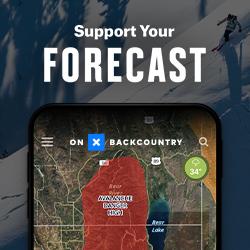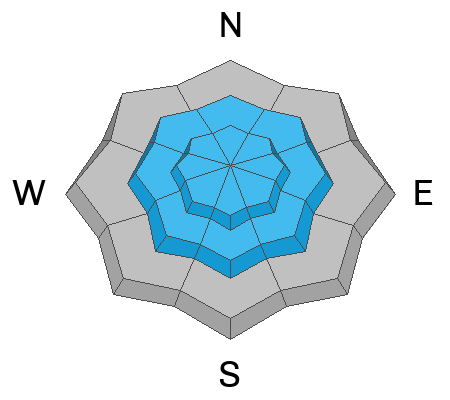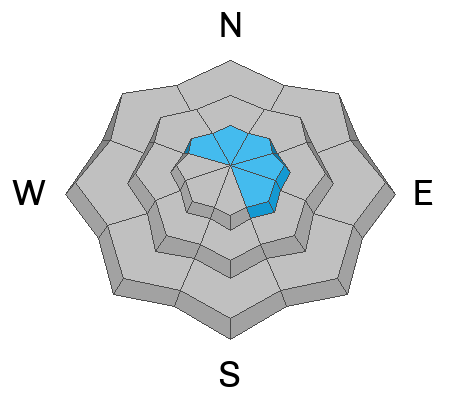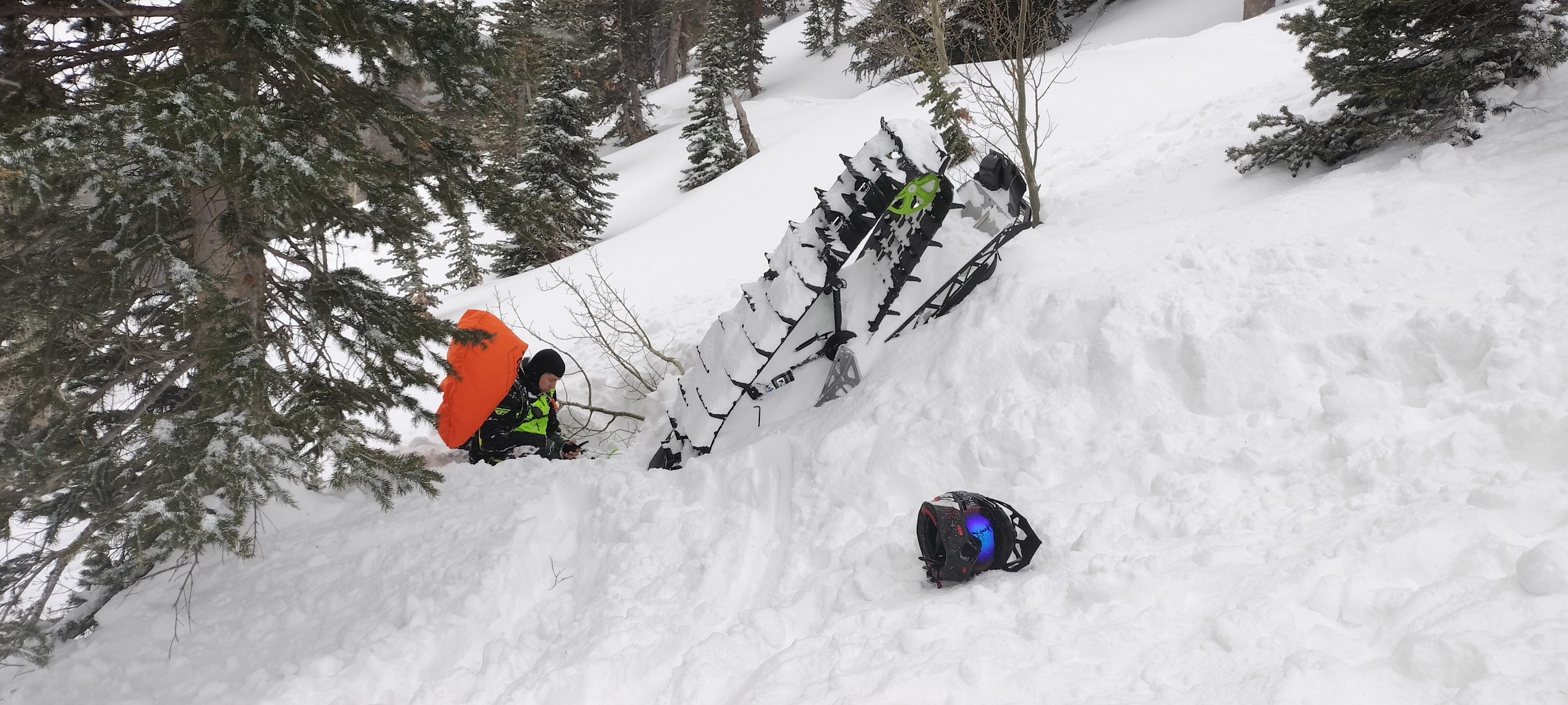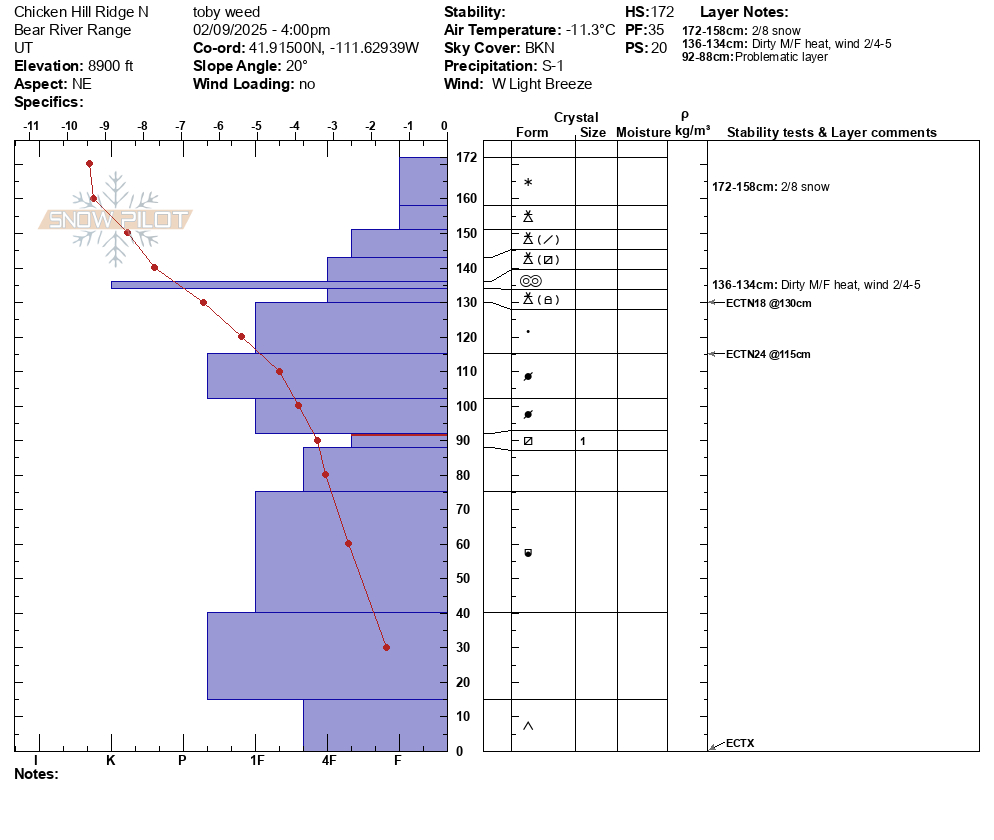Forecast for the Logan Area Mountains

Issued by Toby Weed on
Tuesday morning, February 11, 2025
Tuesday morning, February 11, 2025
Heightened avalanche conditions exist and the danger is MODERATE in upper and mid-elevation terrain steeper than 30°. People could trigger dangerous slab avalanches on previously drifted slopes where a persistent weak layer is buried 1 to 3 feet deep. You can find fine, fast powder conditions in the meadows and on lower angled slopes.
- Evaluate the snow and terrain carefully. You will need to take out your shovel and dig to find and asses the buried persistent weak layer.
- Continue to avoid being on or under steep drifted slopes and ridge-top cornices.

Low
Moderate
Considerable
High
Extreme
Learn how to read the forecast here



